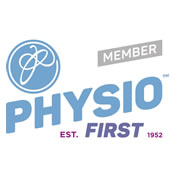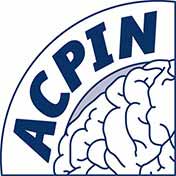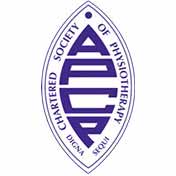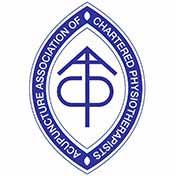Spina Bifida is a ‘neural tube defect’ whereby a portion of the neural tube fails to close fully during the early stages of pregnancy. The neural tube is the part of the embryo that develops into the brain and the spinal cord which during normal foetal development, folds inwards on itself and closes fully after the first month following conception. A baby born with Spina Bifida will present with a defect of the spinal cord and surrounding vertebrae, but the severity of the symptoms depends upon the type of Spina Bifida that has occurred. There are 3 main types:
Spina Bifida Occulta
 This is the mildest form of Spina Bifida, and often individuals have no symptoms at all. It is characterised by a small defect in one or more of the vertebrae of the back with rarely any damage to the spinal cord or nerves. Individuals with this form of Spinal Bifida rarely ever know that they have this condition, unless it is observed as an incidental finding when an X-ray is taken of the spine for a different reason. A dimple, small swelling, dark patch of skin or hair can sometimes be seen on the skin immediately over the affected area. Some individuals with Spina Bifida Occulta may have associated pelvic or lower limb musculoskeletal problems that are detected later on in adulthood when they notice symptoms arising from these areas, presuming that they are as a result of a recent injury of some kind. More often than not, a connection between a musculoskeletal problem and the possibility of the presence of Spina Bifida Occulta is not made.
This is the mildest form of Spina Bifida, and often individuals have no symptoms at all. It is characterised by a small defect in one or more of the vertebrae of the back with rarely any damage to the spinal cord or nerves. Individuals with this form of Spinal Bifida rarely ever know that they have this condition, unless it is observed as an incidental finding when an X-ray is taken of the spine for a different reason. A dimple, small swelling, dark patch of skin or hair can sometimes be seen on the skin immediately over the affected area. Some individuals with Spina Bifida Occulta may have associated pelvic or lower limb musculoskeletal problems that are detected later on in adulthood when they notice symptoms arising from these areas, presuming that they are as a result of a recent injury of some kind. More often than not, a connection between a musculoskeletal problem and the possibility of the presence of Spina Bifida Occulta is not made.
Meningocele
With this rarest form of Spina Bifida, a small ‘cyst’ may protrude through the gap in the spinal cord which is covered by a thin layer of skin. This fluid-filled sac contains membranes that protect the spinal cord, but does not contain the spinal nerve fibres and therefore tends to present with minimal spinal cord or neural damage. Individuals with this type of disorder may grow and develop normally once the cyst is removed surgically and the gap is closed.
Mylocmeningocele
This form of Spina Bifida is the most severe, as the cyst protruding through the gap in the spinal cord contains both the spinal membranes and the nerve roots of the spinal cord at that level. Sometimes the spinal cord itself is contained within this cyst, or the spinal cord and nerve may be fully exposed without the presence of a cyst. Though the gap / cyst can still be surgically closed, the damage to the spinal cord and nerves is often significant and permanent. The neural impairment will depend upon the level of the spinal cord affected by the defect, with muscle paralysis and sensory loss from below the level of the lesion. This will therefore tend to affect the normal functioning of the bladder and the bowel. The higher up the spine the lesion occurs, the more severe the paralysis.
Individuals born with this type of Spina Bifida are often likely to have other associated medical disorders and learning difficulties. Approximately 80% of children with mylomeningocele also have hydrocephalus (a constant build-up of fluid on the brain), and nearly all children with this form of Spina Bifida have an abnormal position of the lower portion of the brain termed a ‘Chiari II Malformation’.
Once a child has been diagnosed with a ‘cystic’ form of Spina Bifida (meningocele or mylomeningocele), they are usually referred to a Consultant Neurosurgeon or Paediatric Spinal Consultant for further investigations to determine the severity of their condition and to assess the need for surgical closure of the defect.
'Tethered’ spinal cord
All forms of Spina Bifida carry the possibility of a ‘tethered’ spinal cord whereby it does not slide up and down during normal movement of the body due to the surrounding tissue impeding the normal mobility of the cord. This tethering may lead to pain in the back and the legs, lower extremity weakness, or a scoliosis (curvature) may develop in the spine as a result of the altered spinal movement.
Physiotherapy for Spina Bifida
Physiotherapy is often required by those individuals who have a cystic form of Spina Bifida in order to address their presenting physical difficulties and to help to prevent any secondary deformities or musculoskeletal complications arising as a result of their neural impairment. There is no cure for Spina Bifida and although it is not a degenerative neurological condition, it is important that rehabilitation is ongoing for those with more severe forms of the disorder to ensure that an optimal functional level is achieved throughout their life, and that an individual may go on to reach their full potential.
If you would like to find out more about our Specialist Neuro Physiotherapy team and the services that we can provide, please get in touch.





